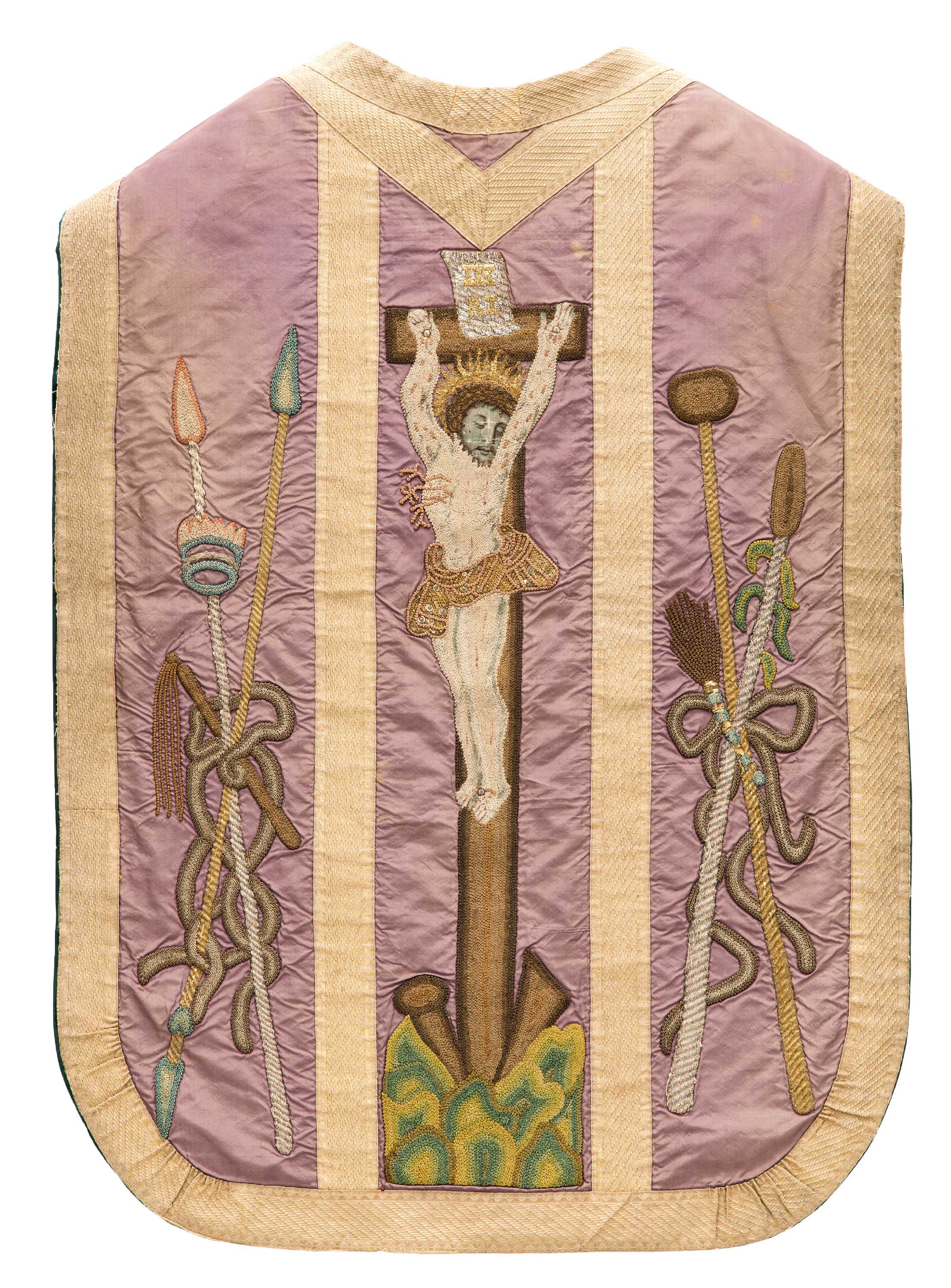
Chasuble.
Lithuania or Poland, late 18th – early 19th c.
Church of St. Michael the Archangel in Tabariškės
18th c. Rococo colours and ideas of Classicism
The spirit of Rococo is particularly well reflected in eighteenth-century patterned silk fabrics from the weaving mills of France, above all Lyon, whose ornaments and colours were adopted by acupictors. The distinctive features of this style are light pastel colours, swirling flower garlands and diagonally meandering “rivers”. In the third quarter of the 18th century, the taste in decorative arts inclined towards classics with a predilection for clear architectural lines and a renewed interest in motifs of classical antiquity.
Chasubles
The chasuble is the central vestment for the Holy Mass worn by a priest over all the other parts of liturgical clothing. Originating from a Roman conical cloak protecting from cold, it has retained its form throughout the Middle Ages. Its sides gradually became shorter allowing more freedom of movement, until it became similar to a magnificent shield. The 19th–20th century liturgical movements returned the ancient form of a cloak to the chasuble.
Embroidery with metal and silk threads, other embroidery techniques
The chasuble is embroidered with chain, bud and knot stitches typical of the second half of the 18th century. Similar embroideries found in the churches of Lithuania and Poland are attributed to the workshop of Ludwika Mniszek-Potocka (1712–1785), which operated in Krasiczyn (Poland).
Images of Christ and scenes from the Gospel, symbols of faith
The Crucifixion and Arma Christi– the instruments of the Passion of Christ – are represented on the back of the chasuble. This decoration of liturgical textile continues the theme known in art since the early Middle Ages: instruments related to the Passion of Christ are depicted as arms that helped Christ achieve a victory against the Satan.
